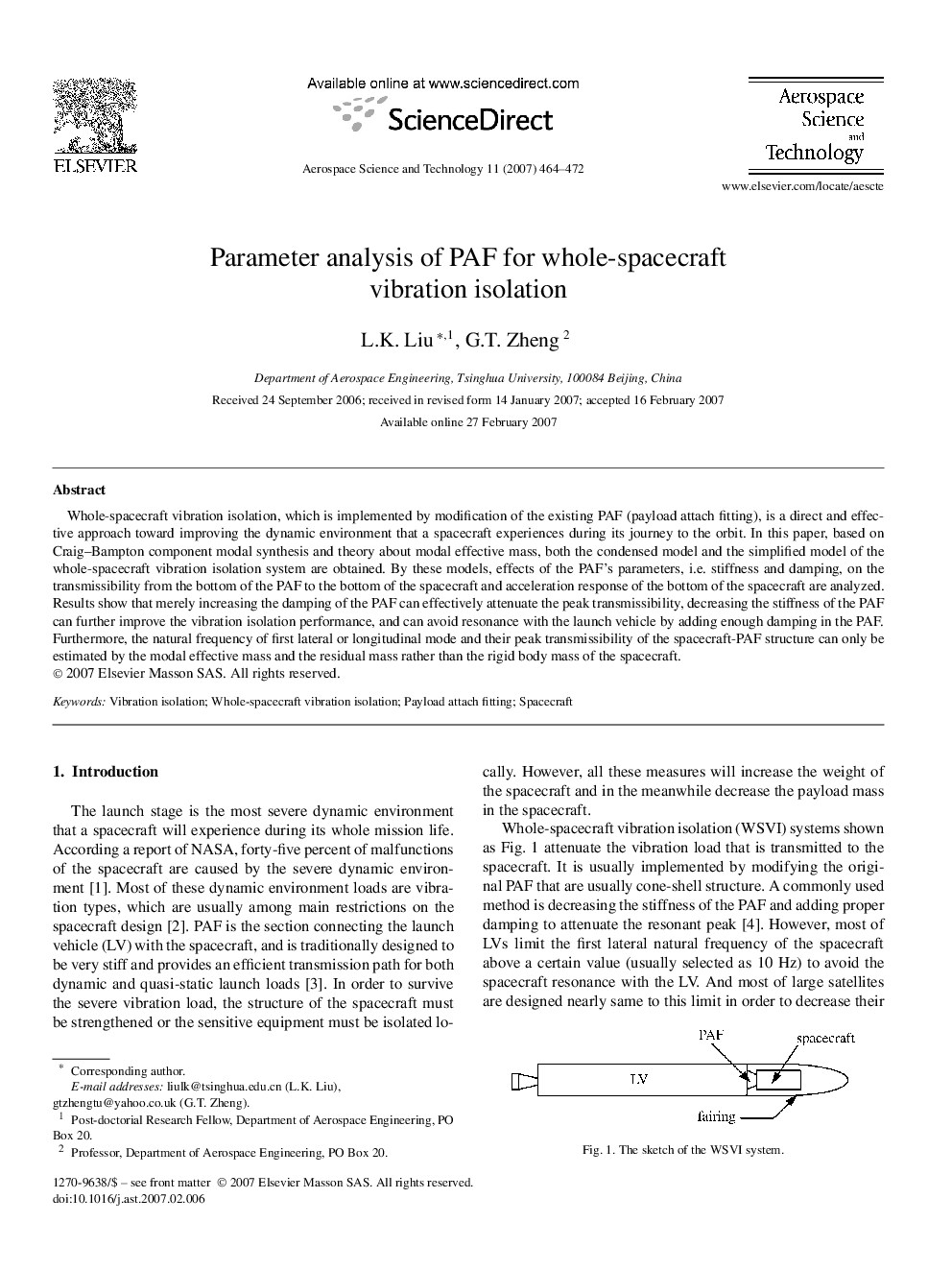| Article ID | Journal | Published Year | Pages | File Type |
|---|---|---|---|---|
| 1718698 | Aerospace Science and Technology | 2007 | 9 Pages |
Whole-spacecraft vibration isolation, which is implemented by modification of the existing PAF (payload attach fitting), is a direct and effective approach toward improving the dynamic environment that a spacecraft experiences during its journey to the orbit. In this paper, based on Craig–Bampton component modal synthesis and theory about modal effective mass, both the condensed model and the simplified model of the whole-spacecraft vibration isolation system are obtained. By these models, effects of the PAF's parameters, i.e. stiffness and damping, on the transmissibility from the bottom of the PAF to the bottom of the spacecraft and acceleration response of the bottom of the spacecraft are analyzed. Results show that merely increasing the damping of the PAF can effectively attenuate the peak transmissibility, decreasing the stiffness of the PAF can further improve the vibration isolation performance, and can avoid resonance with the launch vehicle by adding enough damping in the PAF. Furthermore, the natural frequency of first lateral or longitudinal mode and their peak transmissibility of the spacecraft-PAF structure can only be estimated by the modal effective mass and the residual mass rather than the rigid body mass of the spacecraft.
